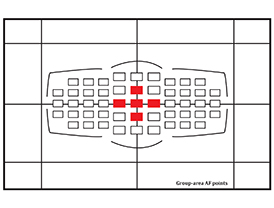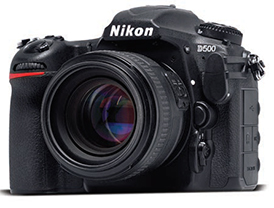
Ask your question to Uncle at sp@nextgenpublishing.net
Which AF Points?
I am using a Nikon D810. I generally use the Group AF for photographing birds. This works well most of the time, but sometimes I feel that the images (especially of small birds) are not as sharp as I would like. Any suggestions?
Arthur S. via email.
The Group AF, as the name suggests, is a cluster (group) of AF sensors which work together like a single large autofocus sensor. This works very well for large birds (even in flight). When photographing small birds, especially those sitting on a tree branch, I would opt for the Single point AF, which has a better chance of locking on the subject; with the Group AF, the leaves/ twigs surrounding the small bird could cause the AF system to focus on the leaves/twigs instead of the bird and this can be a cause of the issue you mention.
Travel Photography
I am planning to pursue travel photography as my career. Can you please guide me through?
Tina Khan, via email
“The world is a book, and those who do not travel read only one page.” – Saint Augustine
As photographers, we love to travel. Sometimes, we travel to take pictures; at other times, pictures inspire us to travel. But we mortals cannot fly like Superman from one location to another; we travel by air, road, rail, or the sea. And of course, the biggest issue is the finance – we have to pay for the journey, hotel accommodation, local transport at site, expensive food and what not. Add to that the money we spend on our photographic equipment!

Financial support to pay for our travels is probably the main problem. If we could make travel photography as our career, we would have the best of both worlds, so to say.
But what can you photograph? Who will buy your photographs? These, and many more questions will come to mind. The global tourism industry is mind-bogglingly large. There are literally thousands of subjects – tourist attractions, hill-stations, scenery, places of local interests, local markets, attractive homes, home decor, hotels, restaurants, photos of local inhabitants, local industries, local food and drinks, toys, specialties architecture, museums, opera houses, transport systems like trains/buses/ steamers, schools, colleges, picnic spots, photos showing the different seasons; the list can be almost endless.
But who will need these images?
International tourism boards, local tourism boards, travel agencies, advertisement agencies, manufacturers of sports goods, vehicle manufacturers, fashion designers, manufacturers of shoes/hiking boots… if you ponder over it, images are required by every industry; the world revolves around advertisements. Your job, besides taking good pictures, is to approach them with your portfolio and keep on trying to make an inroad. This may not be easy for various reasons, and there may be no short-cuts. Also, to be recognised as a professional travel photographer, and to start earning money with your travel photos can take time. So don’t be disheartened if your initial efforts do not pay dividends. Keep trying and you will succeed. Also keep in mind that for your photos to sell, they must be better than (or at least as good as) what others have already provided to the organisations that require those images. For this, you could try your images to be ‘different’ from the runof- the-mill images. Look for different viewpoints and perspectives that others may not have tried. Don’t be afraid to experiment.

Lens Adapters
I am currently a Canon user (550D and 70D). I am interested in bird/ wildlife photography and also am into a little bit of aviation photography. I currently use a 100- 400mm (the older version). Are there any Canon-Nikon adapters / converters that will let me retain the AF and aperture setting controls if I attach a Canon lens on a Nikon body? The reason is that I am getting more and more tempted looking at the capabilities of the Nikon D500; the Canon 7D Mark 2 is nowhere close for my kind of requirements. (Shifting loyalties would burn a big hole in my pocket). Secondly, which of the 150-600mm lens, between Tamron and Sigma (C) would you go for… if you were me! (the Sigma S version is too costly and the Canon 200-600 is nowhere on the horizon).
Abhijit Tokekar, via email
Adapters are available to attach Nikon lenses to Canon bodies, but not Canon lenses to Nikon bodies! And just for information, when you use such an adapter, you lose Autofocus, Auto Aperture Control as well as VR! If you are considering the Nikon D500 and decide to go for it, you could consider the AF-S Nikkor 200-500mm f/5.6E ED VR lens.
If you are looking at a higher ‘reach’, you could consider a 150-600mm lens. Between the Tamron and Sigma (C) 150-600mm, I would opt for the Sigma lens.

